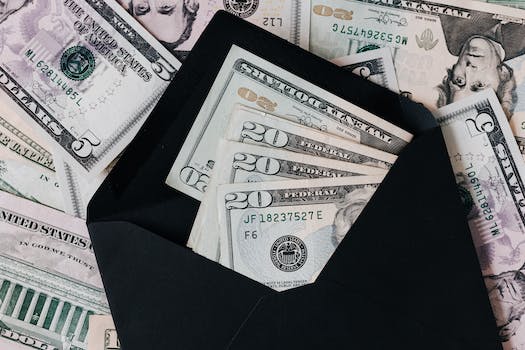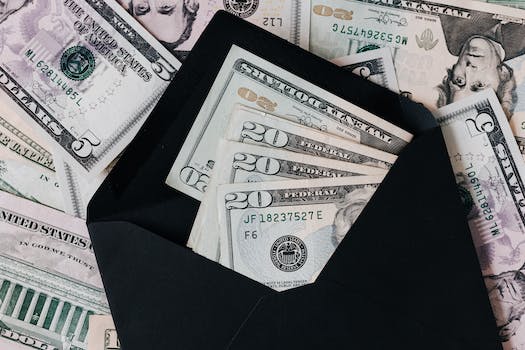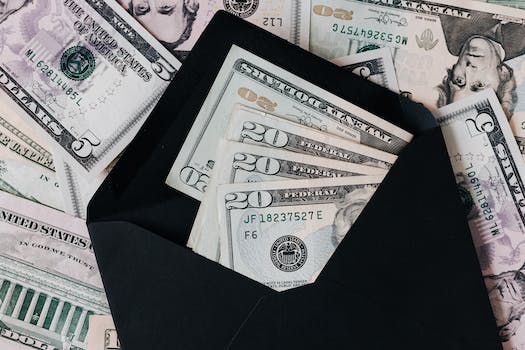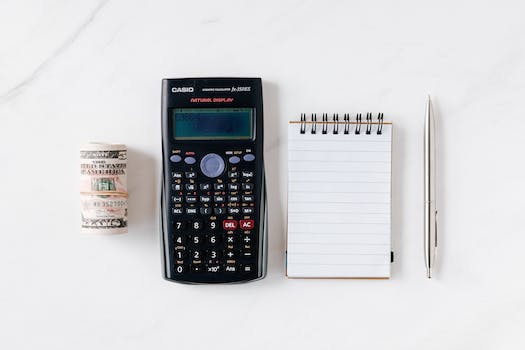Budget Tips How To Save Money
“Maximize your savings with these budget tips.”
Introduction
Introduction: Budgeting is an essential aspect of financial planning. It helps individuals and families to manage their finances effectively and save money for future needs. However, sticking to a budget can be challenging, especially when unexpected expenses arise. In this article, we will provide some budget tips on how to save money and achieve your financial goals.
10 Simple Ways to Cut Your Monthly Expenses
Budget Tips: How To Save Money
Saving money is a goal that many people have, but it can be difficult to achieve. With so many expenses to cover, it can feel like there’s never enough money to go around. However, there are simple ways to cut your monthly expenses and save money. Here are 10 tips to help you get started.
1. Create a budget
The first step to saving money is to create a budget. This will help you see where your money is going and where you can cut back. Start by listing all of your monthly expenses, including rent/mortgage, utilities, groceries, transportation, and entertainment. Then, compare your expenses to your income and see where you can make adjustments.
2. Cut back on eating out
Eating out can be expensive, especially if you do it frequently. Try to limit your restaurant visits and cook at home instead. Not only will this save you money, but it’s also healthier.
3. Use coupons and discounts
Coupons and discounts can help you save money on groceries, clothing, and other items. Look for coupons online or in your local newspaper, and take advantage of sales and discounts.
4. Cancel subscriptions you don’t use
Do you have subscriptions to magazines, streaming services, or other services that you don’t use? Cancel them and save money each month.
5. Use public transportation
If you live in an area with public transportation, consider using it instead of driving. This can save you money on gas and car maintenance.
6. Buy generic brands
Generic brands are often just as good as name-brand products, but they’re usually cheaper. Try buying generic brands for groceries, cleaning supplies, and other items.
7. Cut back on energy usage
Reducing your energy usage can save you money on your monthly utility bills. Turn off lights and electronics when you’re not using them, and use energy-efficient light bulbs and appliances.
8. Shop around for insurance
Insurance can be expensive, but you can save money by shopping around for the best rates. Compare prices from different insurance companies and choose the one that offers the best coverage for the lowest price.
9. Use cash instead of credit cards
Using cash instead of credit cards can help you avoid overspending and accumulating debt. Try using cash for your daily expenses and only use your credit card for emergencies.
10. Plan ahead for big purchases
If you’re planning to make a big purchase, such as a new car or appliance, plan ahead and save up for it. This will help you avoid taking on debt and paying interest.
In conclusion, saving money doesn’t have to be difficult. By following these 10 simple tips, you can cut your monthly expenses and start saving money. Remember to create a budget, cut back on eating out, use coupons and discounts, cancel subscriptions you don’t use, use public transportation, buy generic brands, cut back on energy usage, shop around for insurance, use cash instead of credit cards, and plan ahead for big purchases. With a little effort and discipline, you can achieve your financial goals and live a more financially secure life.
The Ultimate Guide to Meal Planning on a Budget

Are you tired of overspending on groceries every month? Do you want to save money while still enjoying delicious and nutritious meals? Look no further than meal planning on a budget! With a little bit of planning and creativity, you can stretch your food budget further than you ever thought possible.
First, take inventory of what you already have in your pantry, fridge, and freezer. This will help you avoid buying duplicate items and wasting food. Make a list of the ingredients you have on hand and brainstorm meals you can make with them. Don’t be afraid to get creative – sometimes the best meals come from using up odds and ends in your kitchen.
Next, plan your meals for the week ahead. Look for recipes that use affordable ingredients, such as beans, rice, pasta, and frozen vegetables. Consider making large batches of meals that can be eaten throughout the week, such as soups, stews, and casseroles. These meals can be easily reheated for lunch or dinner, saving you time and money.
When shopping for groceries, stick to your list and avoid impulse purchases. Look for sales and discounts on items you need, and consider buying in bulk for items you use frequently. Don’t forget to check the clearance section for discounted items that can be used in your meal planning.
Another way to save money on groceries is to buy generic or store-brand items instead of name-brand products. These items are often just as good as their more expensive counterparts, but cost significantly less. You can also save money by buying produce that is in season, as it is often cheaper and fresher than out-of-season produce.
Meal planning on a budget doesn’t mean sacrificing taste or nutrition. Look for recipes that use flavorful herbs and spices to add depth to your meals. Consider incorporating meatless meals into your plan, as plant-based proteins such as beans and lentils are often cheaper than meat. Don’t forget to include plenty of fruits and vegetables in your meals for added nutrition.
Finally, don’t be afraid to get creative with your leftovers. Use leftover vegetables and meat to make stir-fries, omelets, or salads. Turn leftover rice into fried rice or use it as a base for a grain bowl. Leftover bread can be used to make croutons or breadcrumbs.
In conclusion, meal planning on a budget is a great way to save money while still enjoying delicious and nutritious meals. By taking inventory of what you already have, planning your meals ahead of time, shopping smart, and getting creative with your leftovers, you can stretch your food budget further than you ever thought possible. So why not give it a try? Your wallet (and your taste buds) will thank you!
5 DIY Home Improvement Projects That Will Save You Money
Are you looking for ways to save money on home improvement projects? Look no further! Here are five DIY home improvement projects that will not only save you money but also add value to your home.
1. Paint Your Walls
One of the easiest and most cost-effective ways to update your home is by painting your walls. A fresh coat of paint can transform a room and make it look brand new. Plus, painting your walls yourself can save you hundreds of dollars in labor costs. Just make sure to properly prep your walls before painting, including cleaning and sanding them, and use high-quality paint for a long-lasting finish.
2. Install a Programmable Thermostat
Installing a programmable thermostat is a simple project that can save you money on your energy bills. By setting your thermostat to automatically adjust the temperature when you’re away or asleep, you can reduce your energy usage and save up to 10% on your heating and cooling costs. Plus, many programmable thermostats are easy to install and can be done in just a few hours.
3. Update Your Lighting
Updating your lighting fixtures can give your home a fresh look and save you money on your energy bills. Switching to LED bulbs can save you up to 75% on your lighting costs, and installing dimmer switches can help you control your lighting usage and create a cozy atmosphere. Plus, updating your lighting fixtures can be a fun DIY project that can be done in just a few hours.
4. Refinish Your Cabinets
If your kitchen cabinets are looking worn or outdated, consider refinishing them instead of replacing them. Refinishing your cabinets can save you thousands of dollars and give your kitchen a fresh new look. Just make sure to properly prep your cabinets before refinishing, including cleaning and sanding them, and use high-quality paint or stain for a long-lasting finish.
5. Install a Water Filtration System
Installing a water filtration system can save you money on bottled water and improve the quality of your tap water. Plus, many water filtration systems are easy to install and can be done in just a few hours. Just make sure to choose a system that fits your needs and budget, and properly maintain it to ensure it continues to work effectively.
In conclusion, there are many DIY home improvement projects that can save you money and add value to your home. From painting your walls to installing a water filtration system, these projects can be done in just a few hours and can make a big difference in your home. So why not give them a try and see how much you can save?
The Benefits of Shopping Secondhand: Thrift Store Finds and More
Are you looking for ways to save money on your budget? One great option is to shop secondhand. Thrift stores, consignment shops, and online marketplaces like eBay and Facebook Marketplace can offer great deals on gently used items. Not only can you save money, but you can also find unique and vintage items that add character to your home or wardrobe.
One of the biggest benefits of shopping secondhand is the cost savings. You can often find items for a fraction of their original price. For example, a designer dress that originally cost $200 may be available for $20 at a consignment shop. This can be especially helpful if you’re on a tight budget or trying to pay off debt.
Another benefit is the environmental impact. By buying secondhand, you’re reducing the demand for new products and the resources needed to produce them. This can help reduce waste and lower your carbon footprint. Plus, many thrift stores and consignment shops donate a portion of their profits to charity, so you can feel good about supporting a good cause while saving money.
When shopping secondhand, it’s important to keep a few things in mind. First, be patient. It may take some time to find the perfect item, but the hunt can be part of the fun. Second, inspect items carefully before purchasing. Look for any signs of wear or damage, and make sure the item is clean and in good condition. Finally, don’t be afraid to negotiate. Many thrift stores and consignment shops are willing to haggle on prices, especially if an item has been sitting on the shelf for a while.
So what kinds of items can you find when shopping secondhand? The possibilities are endless. Clothing is a popular option, with many thrift stores offering a wide selection of gently used clothing for men, women, and children. You can also find accessories like jewelry, handbags, and shoes. Home goods are another popular category, with items like furniture, decor, and kitchenware available at a fraction of their original cost.
One of the best things about shopping secondhand is the thrill of the find. You never know what treasures you might uncover. Maybe you’ll find a vintage record player that’s been waiting for a new home, or a set of antique teacups that will add charm to your kitchen. Whatever you find, it’s sure to be unique and full of character.
In addition to thrift stores and consignment shops, there are also online marketplaces like eBay and Facebook Marketplace that offer a wide selection of secondhand items. These can be especially helpful if you’re looking for something specific or don’t have a lot of time to browse in person. Just be sure to read the seller’s reviews and inspect photos carefully before making a purchase.
In conclusion, shopping secondhand can be a great way to save money on your budget while also reducing waste and supporting a good cause. Whether you’re looking for clothing, home goods, or something else, there are plenty of options available. So next time you’re in the market for something new, consider checking out your local thrift store or online marketplace. You never know what treasures you might find.
Maximizing Your Savings: Tips for Using Coupons and Cashback Apps
Are you looking for ways to save money on your everyday purchases? Look no further than coupons and cashback apps! These tools can help you maximize your savings and keep more money in your pocket.
First, let’s talk about coupons. You may think that coupons are only for extreme couponers, but that’s not the case. Coupons can be found in a variety of places, from newspapers and magazines to online coupon websites and even on the packaging of products themselves.
To start using coupons, begin by checking your local newspaper for coupon inserts. You can also search for coupons online by visiting websites like Coupons.com or RetailMeNot. These websites offer a wide variety of coupons for both online and in-store purchases.
Another way to find coupons is to sign up for email newsletters from your favorite stores. Many retailers will send out exclusive coupons and discounts to their email subscribers.
Once you have your coupons, it’s important to use them strategically. Don’t just use a coupon because you have it – make sure it’s for a product you actually need or want. You can also stack coupons by using multiple coupons on the same item, or by combining a coupon with a sale or promotion.
Now, let’s talk about cashback apps. These apps allow you to earn cash back on your purchases by scanning your receipts or linking your credit or debit card to the app.
One popular cashback app is Ibotta. With Ibotta, you can earn cash back on purchases from a variety of retailers, including grocery stores, drugstores, and online retailers. Simply scan your receipt after making a purchase to earn cash back on eligible items.
Another cashback app to consider is Rakuten (formerly known as Ebates). Rakuten offers cash back on purchases made through their website or app at a variety of retailers. Simply click through the Rakuten website or app to make your purchase and earn cash back.
When using cashback apps, it’s important to read the terms and conditions carefully. Some apps may have minimum payout thresholds or restrictions on which retailers or products are eligible for cash back.
In addition to coupons and cashback apps, there are a few other tips to keep in mind when trying to save money on your purchases. First, consider buying generic or store-brand products instead of name-brand items. These products are often just as good as their name-brand counterparts, but at a lower price.
You can also save money by buying in bulk. This is especially true for non-perishable items like toilet paper, paper towels, and cleaning supplies. Buying in bulk can help you save money in the long run, as you won’t have to make as many trips to the store.
Finally, consider shopping at discount stores or using online marketplaces like Amazon or eBay. These retailers often offer lower prices than traditional brick-and-mortar stores, and you can often find great deals on a wide variety of products.
In conclusion, there are many ways to save money on your everyday purchases. By using coupons, cashback apps, and other money-saving tips, you can maximize your savings and keep more money in your pocket. So the next time you’re shopping, be sure to keep these tips in mind and watch your savings grow!
Conclusion
Conclusion: Saving money is an important aspect of financial planning. By following budget tips such as creating a budget, reducing unnecessary expenses, and finding ways to increase income, individuals can save money and achieve their financial goals. It is important to be disciplined and consistent in implementing these tips to see long-term results.







